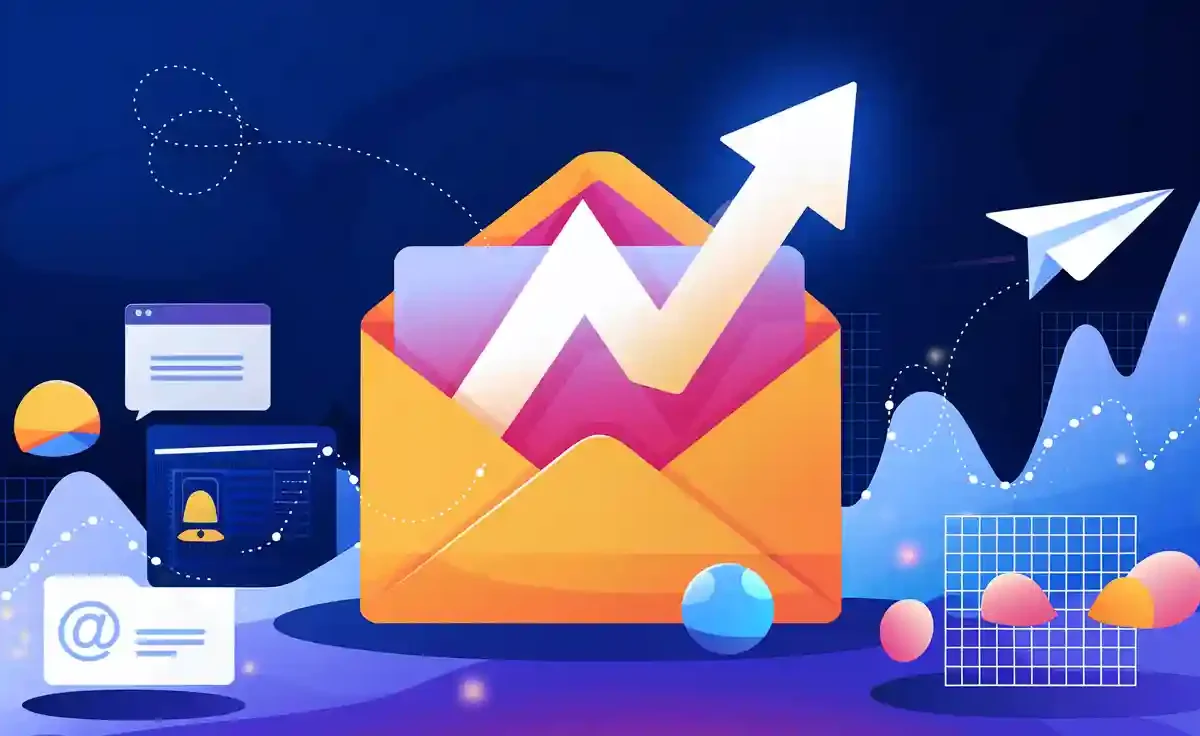
Passive income is money you earn with little ongoing effort. It’s like planting a tree that keeps giving fruit year after year. In 2025, passive income ideas to start without money or with minimal investment are more accessible than ever. Automated tools and online business platforms make it easier for beginners to generate income. Marguerita Cheng, a financial advisor, highlights opportunities like creating e-books or affiliate marketing as great starting points.
Why should you care? Passive income streams can help you achieve financial freedom. Imagine having extra cash flow to cover bills or save for the future. Whether you’re building wealth or just want flexibility, passive income ideas to start with money or without can transform your financial life.
Key Takeaways
Passive income helps you make money with little work. It gives you more freedom and choices with your finances.
Affiliate marketing is a good way to start. Pick a topic, join programs, share content, and promote links to earn money.
Print-on-demand lets you sell custom items without storing them. Focus on making designs and advertising to earn money.
Dividend investing gives you regular payments from stocks. Start small and pick companies with a good record of paying dividends.
Blogging can make money through ads and links. Pick a topic, write good posts, and share your blog to get readers.
1. Affiliate Marketing
What is Affiliate Marketing?
Affiliate marketing is a way to earn money by promoting products or services from other companies. You act as a middleman, sharing links to these products. When someone clicks your link and makes a purchase, you earn a commission. It’s a win-win—you help businesses grow, and they reward you for your efforts. The best part? You don’t need to create your own product or handle customer service.
The affiliate marketing industry is booming. Here’s a quick look at some impressive stats:
Metric | Value |
|---|---|
Global affiliate marketing industry value | |
Growth from 2022 to 2023 | 10.1% |
Average ROI for every $1 spent | $6.50 |
Percentage of yearly earnings from affiliate marketing | Up to 20% |
Retailers meeting revenue objectives | 73% |
These numbers show why affiliate marketing is one of the most popular passive income ideas for beginners.
How to Start Affiliate Marketing
Getting started with affiliate marketing is easier than you might think. Follow these steps:
Pick a Niche: Choose a topic you’re passionate about, like fitness, tech gadgets, or travel. A focused niche helps you attract the right audience.
Join Affiliate Programs: Sign up for programs like Amazon Associates, ShareASale, or ClickBank. These platforms connect you with companies offering affiliate opportunities.
Create Content: Build a blog, YouTube channel, or social media page. Share valuable content that includes your affiliate links.
Promote Your Links: Use SEO, email marketing, or social media to drive traffic to your content. The more clicks your links get, the higher your chances of earning commissions.
Tips for Success in Affiliate Marketing
To make affiliate marketing a reliable passive income stream, keep these tips in mind:
Be Honest: Promote products you genuinely believe in. Your audience will trust you more if you’re authentic.
Focus on Quality: Create helpful, engaging content. High-quality content attracts more readers and builds credibility.
Track Your Performance: Use tools like Google Analytics to monitor which links perform best. This helps you refine your strategy.
Stay Consistent: Success doesn’t happen overnight. Keep creating and promoting content regularly.
Affiliate marketing is a fantastic way to earn passive income while helping businesses grow. With the right approach, you can turn it into a steady source of money.
2. Print-on-Demand

What is Print-on-Demand?
Print-on-demand (POD) is a business model where you sell custom-designed products without holding any inventory. When a customer places an order, your supplier prints the design on the product and ships it directly to them. This means you don’t need to worry about storage, production, or shipping logistics. It’s a fantastic way to earn passive income while focusing on creativity and marketing.
The POD industry is growing rapidly. In 2023, it generated $7.7 billion in global revenue. By 2030, it’s expected to reach $38.2 billion. This growth shows how much potential this passive income model has for beginners like you.
Steps to Launch a Print-on-Demand Business
Starting a POD business is easier than you might think. Follow these steps to get started:
Conduct Market Research: Find a niche that excites you and has demand. Look for trends and gaps in the market.
Create Your Designs: Develop unique designs that resonate with your target audience. Tools like Canva or Adobe Illustrator can help.
Choose a POD Supplier: Pick a reliable supplier like Printful, Printify, or Teespring. They’ll handle printing and shipping for you.
Set Up Your Online Store: Use platforms like Shopify, Etsy, or WooCommerce to showcase your products.
Market Your Products: Promote your store through social media, email campaigns, or influencer collaborations.
By automating order fulfillment with your POD supplier, you can focus on growing your business while earning passive income.
Best Platforms for Print-on-Demand
Choosing the right platform is crucial for your success. Here are some of the best options:
Printful: Offers a wide range of products and integrates with popular e-commerce platforms.
Printify: Known for competitive pricing and multiple supplier options.
Teespring: Ideal for beginners, as it handles everything from production to delivery.
Redbubble: A marketplace where you can upload designs and reach a built-in audience.
Each platform has its strengths, so pick one that aligns with your goals and needs.
Print-on-demand is one of the most beginner-friendly passive income ideas. It lets you turn creativity into money without the hassle of managing inventory. With the right approach, you can build a steady passive income stream that grows over time.
3. Dividend Investing
What is Dividend Investing?
Dividend investing is a strategy where you earn passive income by owning stocks that pay dividends. Dividends are portions of a company’s profits shared with its shareholders. Think of it as a reward for investing in a business. For example, if you own shares in a company that pays $1,000 in dividends annually on a $10,000 investment, you’re earning a 10% dividend yield. This approach allows you to grow your wealth while enjoying regular payouts.
Some companies, known as dividend aristocrats, have increased their dividends for over 25 years. These businesses are known for their stability and strong performance, even during economic downturns. This makes dividend investing one of the most reliable passive income ideas for beginners.
Metric | Explanation |
|---|---|
Dividend Yield | Calculated as Dividend/Price × 100; for example, a $1,000 dividend on a $10,000 investment yields a 10% yield. |
Dividend Payout Ratio | Represents the percentage of earnings paid out as dividends; for instance, a $60 million payout from $100 million earnings results in a 60% ratio. |
Dividend Aristocrats | Companies that have increased dividends for 25+ years, known for stability and strong performance during downturns. |
How to Start Dividend Investing with Limited Funds
Starting dividend investing doesn’t require a fortune. Here’s how you can begin:
Understand Dividend Metrics: Learn about dividend yield and payout ratios. These numbers help you assess whether a company’s dividends are sustainable.
Focus on Dividend Aristocrats: Look for companies with a long history of increasing dividends. They offer stability and consistent payouts.
Consider REITs: Real estate investment trusts (REITs) are companies that own or finance income-generating real estate. They’re required to pay out at least 90% of their taxable income as dividends, making them a great option for passive income.
Start Small with Index Funds: Passive index investing allows you to invest in a diversified portfolio of dividend-paying stocks. It’s a low-cost way to get started without needing extensive research.
By following these steps, you can build a steady stream of passive income, even with limited funds.
Avoiding Common Mistakes in Dividend Investing
To succeed in dividend investing, avoid these pitfalls:
Chasing High Yields: A high dividend yield might seem attractive, but it could signal financial trouble for the company. Focus on sustainable payouts instead.
Ignoring Diversification: Don’t put all your money into one stock or sector. Spread your investments across different industries to reduce risk.
Overlooking REITs: Real estate investment trusts can be a valuable addition to your portfolio. They provide exposure to real estate without the hassle of managing properties.
Neglecting Research: Always research a company’s financial health before investing. Look at its dividend history, payout ratio, and overall performance.
Dividend investing is a powerful way to generate passive income. With the right approach, you can enjoy regular payouts while growing your wealth over time.
4. Real Estate Rentals

What are Real Estate Rentals?
Real estate rentals are one of the most popular passive income ideas. They involve owning properties that you rent out to tenants in exchange for monthly payments. These payments, known as rental income, can provide a steady cash flow while your property appreciates in value over time. Whether you rent out your home or invest in multiple rental properties, this strategy offers a reliable way to build wealth.
The profitability of real estate rentals depends on several factors. For example:
Urban areas, university towns, and business districts often have higher rental demand.
A diverse portfolio of properties can reduce risks and ensure consistent income.
Tax benefits, such as deductions for mortgage interest and property depreciation, can significantly boost your net earnings.
If you’re looking for passive income streams with long-term potential, real estate rentals are worth exploring.
How to Start Earning Passive Income from Real Estate
Getting started with real estate rentals may seem daunting, but it’s manageable if you follow these steps:
Analyze Financial Feasibility: Calculate your monthly expenses, including mortgage payments, maintenance, and taxes. Compare these costs to the potential rental income to ensure profitability.
Choose the Right Location: Look for areas with strong job markets and high demand for rentals. This increases your chances of finding reliable tenants and maximizing rental income.
Start Small: If you’re new, consider renting out your home or purchasing a single property. This allows you to learn the ropes without taking on too much risk.
Hire a Property Manager: Managing rental properties can be time-consuming. A property management company can handle tenant relations, maintenance, and rent collection, making your income more passive.
Plan for the Long Term: Focus on properties with positive cash flow and potential for appreciation. Over time, this strategy can help you build wealth while enjoying tax advantages.
By following these steps, you can turn real estate rentals into a reliable source of passive income.
Tips for Managing Rental Properties
Managing rental properties effectively is key to maintaining your passive income. Here are some tips to help you succeed:
Screen Tenants Carefully: Choose tenants with a good rental history and stable income. This reduces the risk of late payments or property damage.
Set Competitive Rent: Research local market rates to ensure your rent is fair. Overpricing can drive tenants away, while underpricing cuts into your profits.
Stay on Top of Maintenance: Regular upkeep prevents costly repairs and keeps tenants happy. Happy tenants are more likely to renew their leases.
Diversify Your Portfolio: Owning properties in different locations or types (e.g., apartments, single-family homes) can protect you from market fluctuations.
Leverage Tax Benefits: Take advantage of deductions for mortgage interest, property taxes, and depreciation to maximize your net income.
With these tips, you can manage your rental properties efficiently and keep your passive income flowing.
5. Selling Digital Products
What are Digital Products?
Digital products are intangible items you can sell online. They include things like eBooks, templates, online courses, and software. Unlike physical goods, digital products don’t require inventory or shipping. Once you create them, they can be sold repeatedly without additional production costs. This makes them one of the most profitable passive income ideas for beginners.
Why are digital products so appealing?
They offer instant access to customers, eliminating shipping and packaging costs.
Overhead costs are low, making them beginner-friendly.
The digital market is booming, creating endless opportunities for passive income streams.
If you’re looking for a way to earn passive income while leveraging your skills, digital products are a fantastic option.
Beginner-Friendly Digital Product Ideas
Not sure where to start? Here are some beginner-friendly ideas that have proven successful:
Digital Product Idea | Creator/Example | Description |
|---|---|---|
Augmented Reality Filters | Wonder Milk | Generates revenue by selling Instagram filters. |
Lightroom Presets | Christian Mate Grab | Sells Lightroom presets to fans of his photography. |
Digital Planners | N/A | Highly sought-after products in various formats like calendars and journals. |
Instagram Feed Templates | N/A | High demand for visually appealing templates for influencers. |
Relocation Guides | Amel Aitouche | Sells eBooks about relocating to Dubai, leveraging her YouTube channel’s growth. |
Travel Guides | Mariana and Simao | Created and sell Italy travel guides after their travels. |
How-to Guides | Isobel Lorna | Sells guides on securing apprenticeships, targeting her TikTok audience. |
These ideas are perfect for beginners because they don’t require advanced technical skills. You can start small and scale as you gain experience.
Platforms to Sell Digital Products
Once you’ve created your digital product, you’ll need a platform to sell it. Here are some popular options:
Gumroad: Ideal for selling eBooks, templates, and online courses. It’s beginner-friendly and easy to set up.
Teachable: Perfect for creating and selling online courses. It offers tools to help you create a course and market it effectively.
Etsy: Great for selling digital planners, templates, and other creative products.
Udemy: A popular platform for online courses. It allows you to reach a global audience.
Shopify: If you want more control, Shopify lets you set up your own store to sell digital products.
Each platform has its strengths, so choose one that aligns with your goals. With the right platform, you can turn your digital products into a reliable source of passive income.
6. Blogging with Ad Revenue
How Blogging Generates Passive Income
Blogging is one of the most popular passive income ideas for beginners. Once you create a blog and start publishing content, it can generate income through ads, affiliate links, or even digital products. Ads are a simple way to monetize your blog. Platforms like Google AdSense place ads on your site, and you earn money whenever visitors view or click on them.
The potential for blogging as a passive income stream is huge. Many bloggers rely on ad revenue as their primary source of income. However, diversifying into digital products can boost your earnings significantly. RPMs (revenue per thousand impressions) for digital products are over ten times higher than RPMs for ads. This means that while ads are a great starting point, adding other income sources can maximize your blog’s profitability.
Steps to Start a Blog for Beginners
Starting a blog may seem overwhelming, but it’s easier than you think. Follow these steps to get started:
Pick a Niche: Choose a topic you’re passionate about. It could be travel, fitness, or personal finance. A focused niche helps attract a loyal audience.
Choose a Platform: Use beginner-friendly platforms like WordPress or Wix to create a blog. They offer templates and tools to make setup simple.
Get a Domain Name: Pick a memorable domain name that reflects your niche.
Write High-Quality Content: Focus on creating engaging posts that resonate with your audience. During the first six months, prioritize quality over quantity.
Promote Your Blog: Share your posts on social media or forums to drive traffic.
By following these steps, you’ll set a strong foundation for your blog to generate passive income.
Monetization Strategies for Blogging
Once your blog gains traction, you can explore different ways to monetize it. Here are some strategies:
Ad Revenue: Use platforms like Google AdSense to display ads on your blog. This is a straightforward way to earn passive income.
Affiliate Marketing: Promote products or services and earn a commission for every sale made through your links.
Digital Products: Sell eBooks, templates, or online courses. This strategy can significantly increase your earnings compared to ads.
Sponsored Posts: Partner with brands to create content that promotes their products.
Diversifying your income sources ensures your blog remains profitable in the long run. Blogging is a fantastic way to turn your passion into a steady passive income stream.
7. Self-Storage Facilities
What are Self-Storage Facilities?
Self-storage facilities are spaces where people rent units to store their belongings. These units come in various sizes and are often used during life transitions like moving, downsizing, or decluttering. As the owner, you provide the space and collect monthly rental payments. Unlike residential or commercial properties, self-storage units don’t require much upkeep, making them an excellent passive income model.
This business thrives because people always need extra storage. Whether it’s for seasonal items, business inventory, or personal belongings, the demand remains steady. Plus, self-storage facilities are recession-resistant. When times get tough, people often downsize and need a place to store their things. This stability makes self-storage a reliable option for passive income.
How to Start a Self-Storage Business
Starting a self-storage business might sound complicated, but it’s simpler than you think. Here’s how you can get started:
Research the Market: Look for areas with high demand and limited competition. Urban locations or growing suburbs are often ideal.
Choose a Property: You can either build a new facility or repurpose an existing property. Make sure it’s accessible and secure.
Set Up the Units: Divide the space into storage units of various sizes. Add features like climate control if you want to attract more customers.
Automate Operations: Use management software to handle bookings, payments, and customer inquiries. This reduces your workload and makes the income more passive.
Market Your Facility: Promote your business through local advertising, social media, and partnerships with moving companies.
Once your facility is up and running, you can hire a property manager or outsource operations to make it a truly passive income stream.
Benefits of Self-Storage as a Passive Income Model
Self-storage facilities offer several advantages that make them a standout choice among passive income ideas:
Stability During Economic Downturns: Demand for storage often increases during recessions when people downsize or move.
Consistent Cash Flow: Monthly rental payments provide a steady income without the complexities of managing tenants in residential or commercial properties.
Low Maintenance Costs: These facilities require minimal upkeep, especially if you outsource management.
Scalability: You can easily expand by adding more units or opening new locations, allowing your passive income to grow over time.
This passive income model combines reliability, scalability, and low effort, making it perfect for beginners. If you’re looking for a way to generate passive income streams with long-term potential, self-storage facilities are worth considering.
Starting a passive income stream in 2025 could be one of the smartest financial moves you make. It’s not just about earning extra money—it’s about creating freedom and flexibility in your life. Pick one of these passive income ideas that excites you and take the first step today. Whether it’s blogging, real estate, or selling digital products, every journey begins with action. Remember, success in passive income streams takes consistency and patience. Keep learning, stay committed, and watch your efforts grow into something rewarding.
FAQ
What is the easiest passive income idea for beginners?
The easiest option depends on your skills and interests. Blogging or affiliate marketing works well if you enjoy creating content. Selling digital products is great if you’re creative. Start small and build as you learn.
How much money do I need to start earning passive income?
You can start with little to no money. For example, blogging or affiliate marketing requires minimal investment. However, ideas like real estate rentals or dividend investing may need more upfront capital.
How long does it take to see results from passive income?
It varies. Blogging or affiliate marketing might take months to gain traction. Real estate or dividend investing could generate income sooner but requires upfront effort. Consistency is key to success.
Can I combine multiple passive income ideas?
Absolutely! Combining ideas like blogging with affiliate marketing or selling digital products can maximize your earnings. Diversifying your income streams also reduces risk and increases financial stability.
Do I need technical skills to start?
Not necessarily. Many platforms, like Shopify or WordPress, are beginner-friendly. You can also find tutorials online to guide you. Start with what you’re comfortable with and learn as you go.






